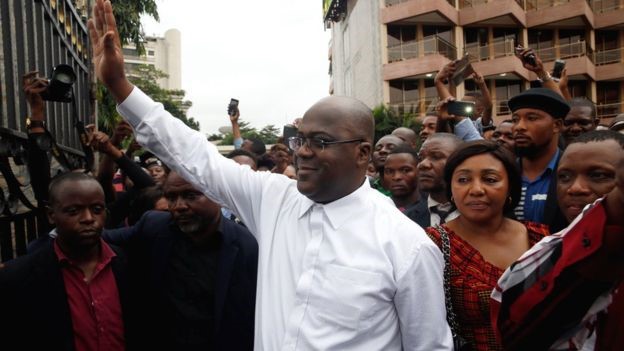
Otunba Gani Adams’ installation as the 15 Aare Ona Kakanfo of the Yoruba race.
Nigeria: Cultural History Behind Aare Ona Kakanfo; PDP Congratulates Otunba Gani Adams
The Peoples Democratic Party (PDP) has congratulated Otunba Gani Adams for his installation as the Aare Ona Kakanfo of the Yoruba race.
PDP National Publicity Secretary, Kola Ologbondiyan, in a statement on Tuesday, said the choice of Otunba Adams for the position was a mark of the confidence reposed in him by the Yoruba race due to his contributions towards the protection and advancement of the rights of the masses.
The PDP urged the new Aare Ona Kakanfo to see his selection among 25 other candidates as an act of God and as such use the position to propagate and promote the unity and growth of the country, while defending the course of the down-trodden not only in Yoruba land but also across the nation.
The party said that the nation is in urgent need of healing and national integration and urged the Aare Ona Kakanfo to do all within the powers and influence of his new office to help to actualize such.
The PDP wished Otunba Adams well and prayed God to grant him the wisdom and strength to succeed in this very important office.
How Aare-Ona-Kakanfo title came to be
THE creation of the title of Aare Ona Kakanfo was the direct consequence of the ideas of a former ruler of Old Oyo Empire, Alaafin Ajagbo, who reigned in the 1600s. His predecessors, from Ajaka, who succeeded Sango (the god of thunder), to Aganju, Kori, Oluaso, Onigbogi, Eguguojo, and Orompoto to Abipa and Obalokun, all suffered incessant attacks by neighbouring states.
Aare-Ona-Kakanfo Ajagbo had a twin brother, Ajampati, and like the Biblical Jacob and Esau, Ajagbo was an outdoorsman, while Ajampati preferred the comforts of the royal court. As a result, Ajagbo, as a prince was part of many military expeditions to fend off invaders, and grew up a warrior, all the while nurturing ideas on how best to deal with military aggression against his kingdom-state.
One of the direct results of his ideas when he became Alaafin was the creation of the office and title of Aare Ona Kakanfo, meaning Field Marshal, or Generalissimo of the Alaafin’s armies. He then appointed one of his close friends, Kokoro Gangan, described as a skilled tactician, from Iwoye as the first Kakanfo. Ajagbo is perhaps the longest reigning Alaafin in history; he was said to have reigned for over 140 years! After creating the Kakanfo title, he invested the holder the command of all his forces, outside Oyo town.
For the defence of the Alaafin and Oyo town and environs, Ajagbo created a metropolitan force which he placed under the command of the Bashorun That is not all; Ajagbo created ranks for soldiers in the Oyo Army. In all, he was said to have created no less than 70 ranks; 16 of which were, in Western military terms, principal staff officers and field commanders, while the remaining 54 were non-commissioned officers and other cadres. Ranks/titles of the field commanders include the Bashorun, Balogun, Jagun, Agba-Akin, Akogun, Olorogun, Oluogun, AareAgo, and many more. Mystiques of the Kakanfo aura.
The procedures and conventions instituted by Ajagbo and nurtured by succeeding Alaafins were probably responsible for the mystiques surrounding the office and title. At installation, the major rite that must be performed is the administering of two hundred and one (201) incisions on the Kakanfo-designate. The incision is called gbere, in Yoruba, chiefly tiny cuts made with a razor, from the forehead backwards to the waist.
Each of the 201 incisions is rubbed with 201 different herbal preparations expected to take the courage and bravery of the Kakanfo to super-human levels. After the incisions, the Kakanfo is “crowned” with a specially-made head-dress, that only him wears. It is, in Yoruba, called the Ojijiko. After installation, the Kakanfo leaves Oyo, the Alaafin’s city for his own domain; it is forbidden that the Kakanfo and the Alaafin live together in the same town. In addition, the Kakanfo is required to wage war against any peoples and territories at the behest of the Alaafin, and is expected to win, or return a corpse.
The circumstances of the deaths of some past Kakanfo probably reinforced the belief that there is a curse on the title; this may not be so. Of the 14 holders of the title so far, the first 12, from Kokoro Gangan of Iwoye to Momodu Obadoke Latoosa of Ibadan, were purely military commanders. Of these, three waged wars that impacted the history of the Yoruba people significantly.
These were Kurunmi of Ijaye, Afonja of Ilorin, and Obadoke Latoosa of Ibadan. The succeeding two, Samuel Ladoke Akintola and Moshood Kasimawo Olawale Abiola were civilians; the title had regressed to the honorary pedestal after the effects of colonisation, establishment of indirect rule, and the creation of western-style military institutions.
Akintola and Abiola Akintola was a victim of military incursion into politics; he was a target as Premier of the Western Region when the putschists of 1966 struck, just like other political leaders in other parts of the country.
Abiola’s case was significantly different in that he turned victim of a deathly power struggle whose ramifications were obscure to him.
Past holders of the title
1. Kokoro Gangan of Iwoye
2. Oyapote of Iwoye
3. Oyabi of Ajase
4. Adeta of Jabata
5. Oku of Jabata
6. Afonja of Ilorin
7. Toyeje of Ogbomoso
8. Edun of Gbogun
9. Amepo of Abemo
10. Kurunmi of Ijaye
11.Ojo Aburumaku of Ogbomoso
12. Obadoke Latoosa of Ibadan
13.Ladoke Akintola of Ogbomoso
14. Moshood Abiola of Abeokuta




Recent Comments